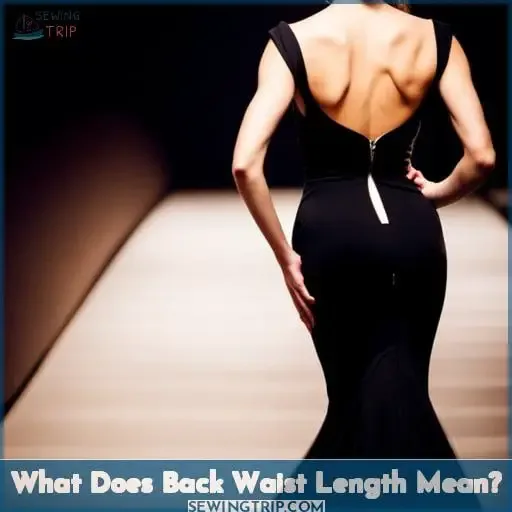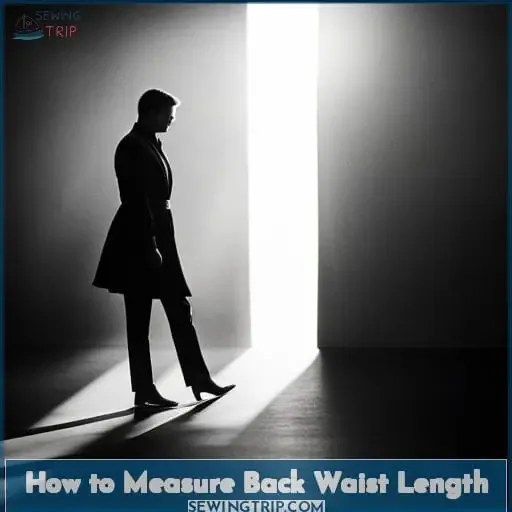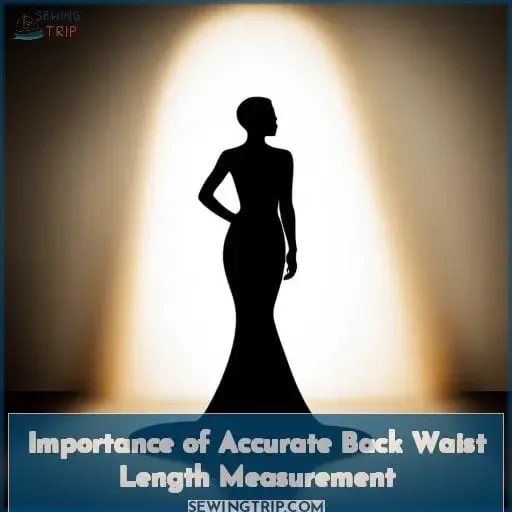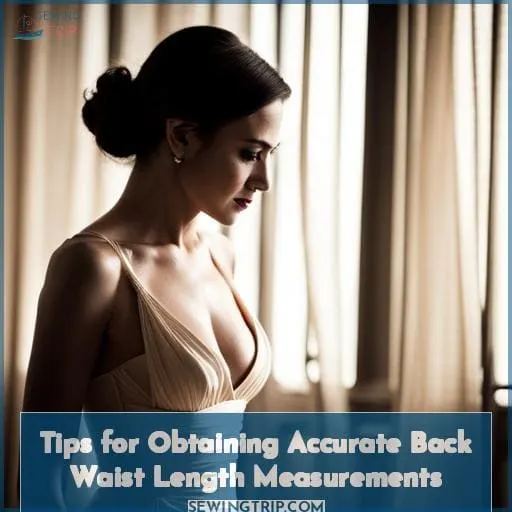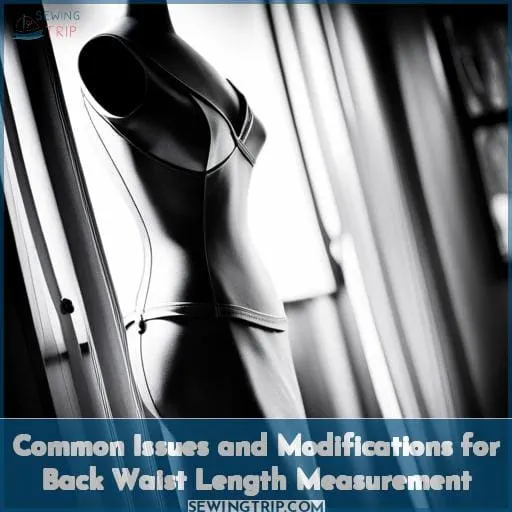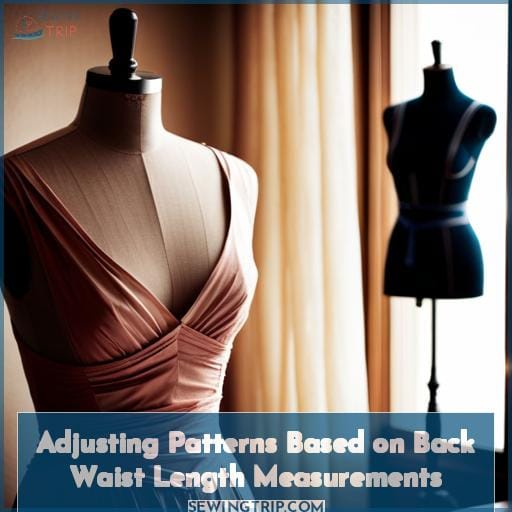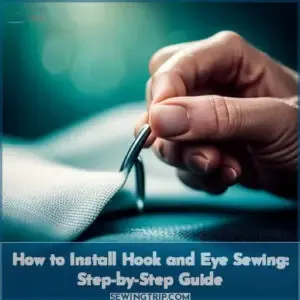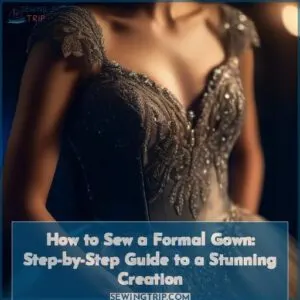This site is supported by our readers. We may earn a commission, at no cost to you, if you purchase through links.
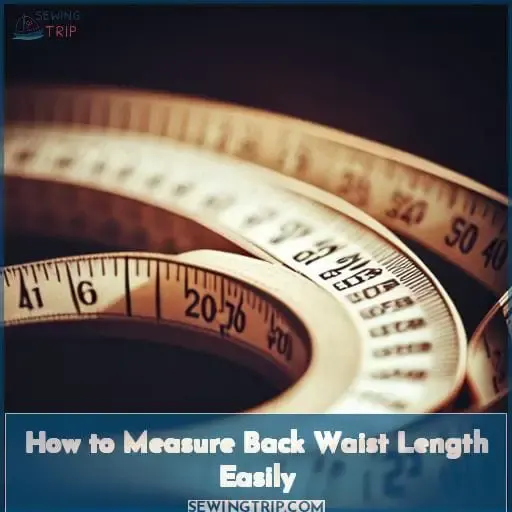 Ready to take your measurements like a pro? In this article, we’ll show you how to easily measure your back waist length. It’s an essential measurement for tailoring clothes or finding the perfect fit. No need to stress – measuring is simple when you know the right techniques.
Ready to take your measurements like a pro? In this article, we’ll show you how to easily measure your back waist length. It’s an essential measurement for tailoring clothes or finding the perfect fit. No need to stress – measuring is simple when you know the right techniques.
Table Of Contents
- Key Takeaways
- What Does Back Waist Length Mean?
- How to Measure Back Waist Length
- Importance of Accurate Back Waist Length Measurement
- Tips for Obtaining Accurate Back Waist Length Measurements
- Common Issues and Modifications for Back Waist Length Measurement
- Adjusting Patterns Based on Back Waist Length Measurements
- Frequently Asked Questions (FAQs)
- Conclusion
Key Takeaways
- Back waist length is the measurement from the base of the neck to the natural waist and is crucial for garment fit and pattern adjustments.
- Maintaining good posture and using a flexible measuring tape are important for obtaining accurate measurements.
- Swayback adjustments may be necessary for individuals with unique shapes, and precise measurements are key to ensuring well-fitting garments.
- Enlisting a friend, standing straight, and considering body proportions and postural issues can contribute to obtaining accurate measurements.
What Does Back Waist Length Mean?
Back waist length refers to the measurement from the base of your neck to your natural waist. It’s an essential measurement in achieving proper garment fit and ensuring that your clothes flatter your figure.
As a tailor or fashion designer, understanding back waist length allows you to create patterns and make adjustments tailored specifically for each individual’s body shape.
Measuring back waist length accurately is crucial for obtaining precise measurements that will result in well-fitting garments. You can use a tape measure as one of the primary tools for this task. By starting at the base of the neck, also known as C7 vertebra, and moving down towards the natural waistline, you can determine this important measurement.
Garment fit greatly depends on accurate back waist length measurements because variations in body types require pattern adaptations such as swayback adjustment or modifications based on specific needs like posture issues or ailments affecting individuals’ sizes and proportions.
In summary, understanding what back waist length means provides valuable insight into how it impacts garment fit and why it plays a vital role in sewing projects.
How to Measure Back Waist Length
To accurately measure your back waist length, start by standing up straight and using a tape measure to determine the distance from the prominent bone at the base of your neck down to your natural waistline.
Here are three key steps for measuring your back waist length easily:
- Maintain proper posture: Stand tall with shoulders relaxed and ensure that you’re not slouching or leaning forward. Good posture is essential for obtaining an accurate measurement.
- Use a flexible measuring tape: Wrap the tape around yourself, starting at the prominent bone on one side of your neck and bringing it down along your spine to reach your natural waistline.
- Account for swayback adjustments if necessary: If you have a swayback (an exaggerated inward curve in the lower back), you may need to make adjustments during sewing or pattern drafting processes to accommodate this unique shape.
Importance of Accurate Back Waist Length Measurement
Accurate measurement of the back waist length is crucial for achieving a proper fit in garments. It not only ensures that your clothing will sit correctly on your body, but it also impacts how comfortable you feel when wearing them.
Individual variations in body shape and posture can greatly affect the back waist length measurement, making it essential to take accurate measurements to achieve a tailored fit. Incorrectly measuring this area can lead to issues such as excess fabric or tightness around the waistline, which may result in discomfort and an unflattering appearance.
Posture impact should be taken into consideration when measuring the back waist length since poor posture can distort measurements. Swayback considerations are important as well; adjustments of 5/8 to 1 inch might be necessary for individuals with swaybacks.
Having someone assist you during the measuring process is highly recommended as they can ensure accuracy by reading out measurements while keeping tension on the tape measure consistent throughout each step.
Sewing adjustments based on accurate back waist length measurements will help create garments that flatter your figure and provide optimal comfort.
Tips for Obtaining Accurate Back Waist Length Measurements
Now that you understand the importance of accurately measuring your back waist length, let’s delve into some helpful tips to ensure precise measurements.
Follow these suggestions to obtain accurate back waist length measurements:
- Partner Assistance: Enlist the help of a partner or friend to assist with measuring your back waist length. Having someone else take the measurement ensures greater accuracy and eliminates any potential errors caused by trying to measure yourself.
- Posture Considerations: Stand up straight with good posture while taking the measurement. Poor posture can affect the alignment of your spine and distort the measurement, leading to inaccurate results.
- Swayback Adjustments: If you have a swayback (an excessive curvature in your lower spine), make sure to account for it when measuring your back waist length. A swayback adjustment may be necessary by adding 5/8th inch or more depending on individual body variances.
Remember that each person’s body is unique, and there may be challenges in obtaining accurate measurements due to varying factors such as body proportions or postural issues like an S-curve or hip height differences.
However, by following these tips and making necessary adjustments along the way , you can overcome these challenges and achieve precise back waist length measurements for better garment fitting.
Common Issues and Modifications for Back Waist Length Measurement
When measuring your back waist length, it’s important to be aware of common issues and potential modifications that may arise.
One common issue is the need for swayback adjustments. Swayback refers to a posture where the lower back curves inward excessively, affecting the measurement from the prominent bone at the base of your neck to your natural waistline.
Another factor that can influence back waist length measurements is individual body types. Different body types have varying proportions and settle points, which means their back waist lengths will differ as well.
Sewing challenges may also arise when working with different back waist lengths. Modifications might be required in pattern adjustments or alterations for achieving accurate fit based on these measurements.
To ensure proper garment fitting, it’s crucial to address these common issues and make necessary modifications based on individual body types and sewing challenges encountered during measuring process.
Adjusting Patterns Based on Back Waist Length Measurements
To adjust patterns based on your back waist length measurements, you can make modifications that ensure a better fit for your individual body shape and proportions.
Properly adjusting the pattern is crucial for achieving the desired garment fit and avoiding sewing challenges. Individual variations in body measurements, such as posture considerations or unique back waist lengths, must be taken into account during pattern construction.
When adjusting patterns based on back waist length measurements, consider shortening or lengthening the torso section of the pattern to match your specific measurement. This will help achieve a balanced look and prevent any discomfort caused by an ill-fitting garment.
Additionally, pay attention to any swayback adjustments that may be necessary due to variations in posture. These adjustments can improve both comfort and appearance when wearing garments made from adjusted patterns.
By making these necessary pattern adjustments based on accurate back waist length measurements, you’ll have greater control over achieving a perfectly tailored look that flatters your individual silhouette while ensuring optimal garment fit.
Frequently Asked Questions (FAQs)
Can I measure my back waist length on my own, or do I need someone to help me?
To accurately measure your back waist length, it’s best to have someone assist you.
How do I determine if I need to make a swayback adjustment when measuring my back waist length?
To determine if a swayback adjustment is needed when measuring your back waist length, observe any excess fabric at the lower back.
If there’s wrinkling or pooling, it suggests a swayback.
Consider adjusting by removing 5/8 to 1 inch from the pattern for optimal fit and comfort.
Are there any specific considerations I should keep in mind when measuring the back waist length for different types of garments?
When measuring back waist length for different garments, consider the specific style and fit you desire. Take into account factors like fabric drape, silhouette, and intended movement to ensure a flattering and comfortable result.
Can I use my front waist measurement to determine my back waist length, or do I need to measure it separately?
To determine your back waist length, measure it separately from the front waist measurement.
The back waist length is crucial for achieving accurate garment fit and ensuring a flattering silhouette.
Take precise measurements to master your sewing skills and create stunning garments.
What are some common issues or challenges that people face when measuring their back waist length, and how can I overcome them?
To conquer the challenges of measuring your back waist length, stand tall like a fashion warrior!
Keep that tape measure in contact with your skin.
Recruit an ally to ensure accuracy.
Liberation awaits!
Conclusion
Ready to measure your back waist length like a pro? With the right techniques, it’s easy to unlock the power of precise measurements. Whether you’re a tailor, fashion designer, or fitness trainer, accurately measuring your back waist length is essential for achieving the perfect fit.
Remember to follow the tips and modifications provided to ensure accuracy. So grab your tape measure and start taking your measurements with confidence. You’ll be amazed at the difference it makes in your tailoring or fitting process.

